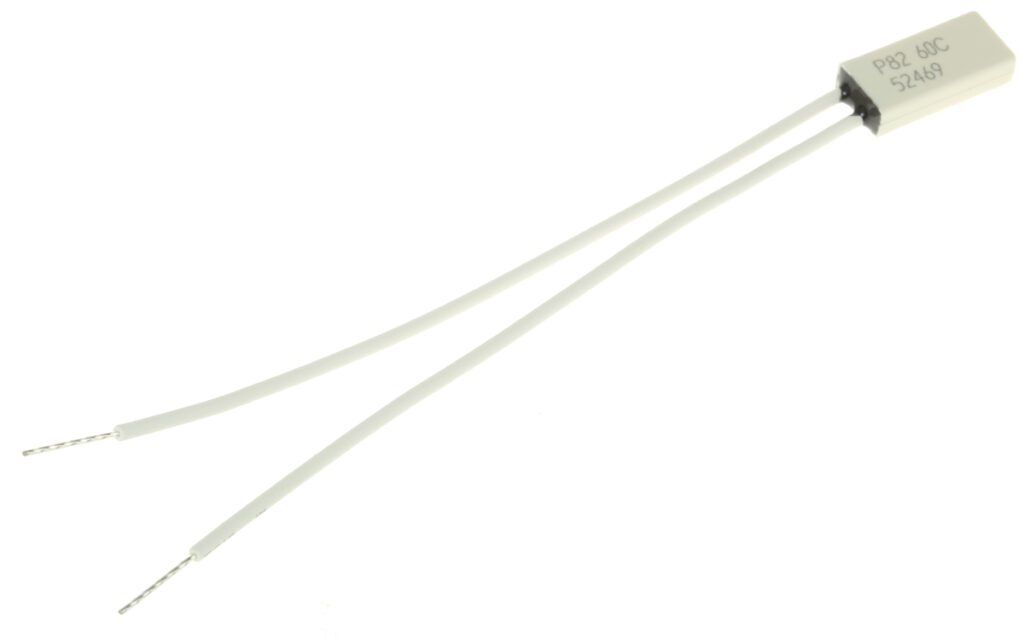
Introduction
Every electronic system, from household appliances to advanced industrial equipment, requires safety mechanisms that protect circuits from overheating and damage. One of the most essential protective components is the thermal fuse. Compact but powerful, a thermal fuse prevents catastrophic failures by disconnecting the power supply when excessive heat is detected. Understanding how thermal fuses function, their benefits, and applications helps ensure both user safety and longer equipment lifespan.
What Is a Thermal Fuse?
A thermal fuse is a temperature-sensitive device that interrupts the electrical circuit when the surrounding temperature exceeds a specified limit. Unlike resettable protective devices such as circuit breakers, a thermal fuse operates once and must be replaced after activation. It is typically used as a safeguard in appliances and electronics where overheating poses a serious risk.
The fuse contains a pellet or material that melts at a calibrated temperature, breaking the circuit permanently. This makes thermal fuses reliable in environments where safety cannot be compromised.
How a Thermal Fuse Works
The operation of a thermal fuse is simple yet effective.
- Temperature detection: The internal pellet material senses heat levels.
- Melting point: When the ambient temperature exceeds the rated value, the pellet melts.
- Circuit interruption: The electrical contact inside the fuse opens, cutting power flow.
This mechanism ensures that sensitive electronic components like capacitors, resistors, connectors, and microcontrollers are protected from thermal stress that could lead to fire hazards or system failure.
Key Features of Thermal Fuses
Thermal fuses are designed with features that make them indispensable in modern electronics:
- Precise temperature ratings ranging from 70°C to 250°C.
- Compact structure suitable for PCB assemblies and consumer devices.
- Reliable protection against prolonged overheating.
- Integration with other electronics, including relays, sensors, and controllers.
These features allow thermal fuses to be implemented across multiple industries, ensuring safety without compromising performance.
Applications in Electronics and Electrical Systems
The versatility of thermal fuses makes them ideal for use in a wide range of products:
- Household appliances: Coffee makers, hair dryers, and irons use thermal fuses to prevent fires caused by overheating.
- Industrial electronics: Protecting controllers, motors, and transformers from excessive thermal loads.
- Power supplies: Safeguarding capacitors, diodes, and voltage regulators in adapters and chargers.
- Lighting systems: Ensuring LEDs, ballast circuits, and electronic drivers operate within safe temperature ranges.
- Automotive electronics: Installed in car chargers, battery packs, and electric motors for thermal protection.
Each of these applications highlights how critical thermal fuses are for protecting sensitive electrical circuits.
Importance in Industrial Automation
In industrial environments, where machines operate continuously, thermal fuses act as silent guardians. Connected with contactors, switches, and safety relays, they add redundancy to the protection system. For instance, when a motor controller overheats due to excess load, the thermal fuse disconnects the supply before damage spreads to the microprocessors, sensors, or PLC controllers. This not only prevents equipment breakdown but also minimizes costly downtime.
Thermal Fuse vs. Circuit Breaker
While both devices protect against abnormal conditions, they work differently:
- Thermal fuses respond exclusively to temperature changes, not current overloads.
- Circuit breakers protect primarily against overcurrent and short circuits but may not react quickly to overheating.
- Thermal fuses are single-use, while circuit breakers can be reset and reused.
In many applications, both components are used together for comprehensive protection.
Benefits of Using Thermal Fuses
The integration of thermal fuses provides numerous advantages:
- Enhanced safety by reducing fire risks from overheating.
- Low cost and high reliability, making them suitable for mass production in consumer electronics.
- No maintenance required, as they function automatically.
- Compatibility with other protective devices like sensors, capacitors, and controllers.
- Long-term equipment protection, improving product lifespan and performance.
These benefits make thermal fuses an economical yet essential choice for manufacturers and engineers.
Future of Thermal Fuses in Electronics
As electronics continue to evolve, thermal fuses are expected to become more advanced and precise. Emerging trends include:
- Miniaturized designs for use in compact devices such as smartphones and tablets.
- Integration with smart sensors for predictive fault detection.
- Eco-friendly materials to comply with international safety and environmental standards.
- High-temperature fuses for electric vehicles, renewable energy systems, and high-power controllers.
These innovations will ensure thermal fuses remain indispensable in future automation, power electronics, and IoT-enabled devices.
Conclusion
A thermal fuse may be small, but its role in electronics and electrical systems is massive. By disconnecting circuits when temperatures exceed safe limits, it prevents accidents, protects sensitive components, and ensures compliance with safety regulations. From consumer devices to industrial automation, thermal fuses deliver reliable protection where it matters most. As technology advances and electronics become more compact and powerful, the importance of thermal fuses in safeguarding modern systems will only continue to grow.
